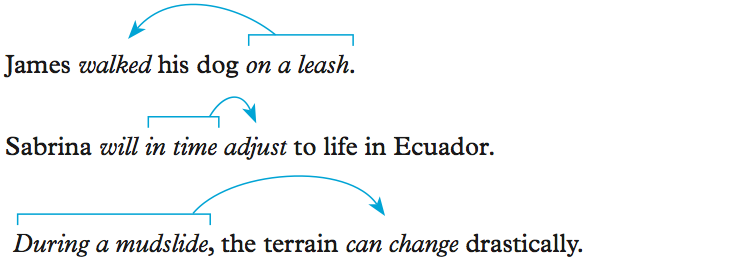48a. Prepositional phrases
A prepositional phrase begins with a preposition such as at, by, for, from, in, of, on, to, or with (see 46f) and usually ends with a noun or noun equivalent: on the table, for him, by sleeping late. The noun or noun equivalent is known as the object of the preposition.
Prepositional phrases function as adjectives or as adverbs. As an adjective, a prepositional phrase nearly always appears immediately following the noun or pronoun it modifies.

Adjective phrases usually answer one or both of the questions Which one? and What kind of? If we ask Which walls? or What kind of walls? we get a sensible answer: walls of mud.
Adverbial prepositional phrases usually modify the verb, but they can also modify adjectives or other adverbs. When a prepositional phrase modifies the verb, it can appear nearly anywhere in a sentence.

If a prepositional phrase is movable, you can be certain that it is adverbial.
In the cave, the explorers found well-preserved prehistoric drawings.
The explorers found well-preserved prehistoric drawings in the cave.
Adverbial word groups usually answer one of these questions: When? Where? How? Why? Under what conditions? To what degree?
James walked his dog how? On a leash.
Sabrina will adjust to life in Ecuador when? In time.
The terrain can change drastically under what conditions? During a mudslide.
In questions and subordinate clauses, a preposition may appear after its object.
What are you afraid of?
We avoided the bike trail that John had warned us about.